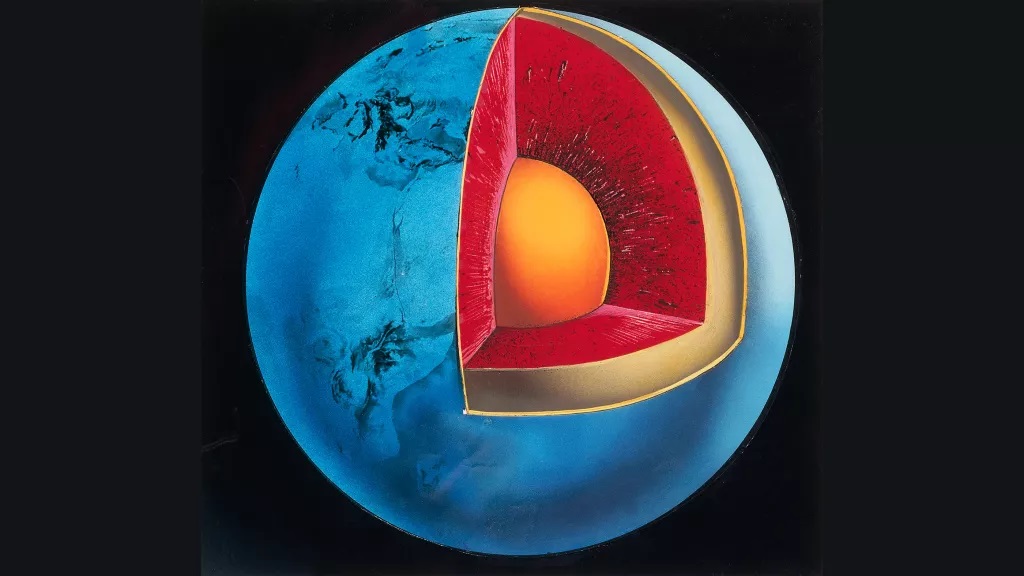
Earth might have more layers than scientists thought.
New research finds that there may be a hidden layer inside the Earth’s solid inner core — an inner-inner core, if you will. The precise nature of this layer is mysterious, but it could have something to do with changes in the structure of iron under extreme temperatures and pressure. The study reveals that there is more complexity to the inner core than previously appreciated, said Jo Stephenson, a doctoral student in seismology at Australian National University in Canberra, who led the research.
“It’s not just a solid ball of iron,” Stephenson told.
A complex core
Earth’s core comes in two parts. The liquid outer core starts about 1,800 miles (2,897 kilometers) from the surface of Earth and is made of liquid metals at temperatures of 4,000 to 9,000 degrees Fahrenheit (2,204 to 4,982 degrees Celsius). At about 3,200 miles (5,150 km) below Earth’s surface, the core transitions to solid iron (and a bit of nickel).
The first inklings that there might be something interesting lurking at the center of the inner core came as far back as the 1980s. Because there’s no way to get to the inner core, where temperatures approach those at the surface of the sun, scientists use earthquake waves to make images of the core. Waves from an earthquake on one side of the planet that are detected on the other side of the planet carry subtle changes that scientists can use to recreate an image of what they’ve passed through.
Strangely, when waves pass through the core from north to south, they travel faster than waves passing through the core parallel to the Earth’s equator. No one knows why this is, Stephenson said, but it’s a consistent finding. The technical term for this oddity is anisotropy.
Deep mysteries
But at the very center of the inner core, something seems to be different, scientists noticed in the early 2000s. At this depth, the anisotropy seemed not to match that of the rest of the inner core.
“For the last two decades it has been very, very unclear what this signal in the center of the Earth in the data is and why we see it,” Stephenson said.
Stephenson and her colleagues brought together a dataset of about 100,000 earthquake waves that passed through this level of the core and applied an algorithm that searches for the best physical explanation of what’s going on to explain the data. What they found was that in the inner-inner core, starting about 400 miles (650 km) from the center of Earth, the anisotropy in the slow direction isn’t quite parallel with the equator anymore, but 54 degrees off.
“This isn’t just noise in the data, this is really something that’s there,” Stephenson said.
But it’s not easy to say what that something is. The researchers are now working with mineral physicists and geodynamicists to try to come up with models of the inner-inner core that would explain this change. As the planet cools, the inner core is cooling and expanding, Stephenson said, so the inner-inner core structure could have something to with the way iron crystallizes as it cools, or it could be due to changes in the way the metal behaves at great temperatures and pressures.
Imaging the core is complex, in part because the deep earthquakes that scientists use for imaging don’t occur evenly across the globe. This spotty dataset leads to blind spots. Seismologists and geophysicists are now working on ways to tease out subtle types of earthquake waves called exotic phases that have passed through the inner core. These phases are usually too subtle to make out from a single earthquake, but they can be detected in large datasets of thousands of earthquakes.
The core is important to understand, Stephenson said, because its swirling interactions create Earth’s magnetic field. The magnetic field, in turn, shields the planet from charged particles streaming from the sun. This protection enabled the evolution of life.
“It’s really, really important,” Stephenson said
